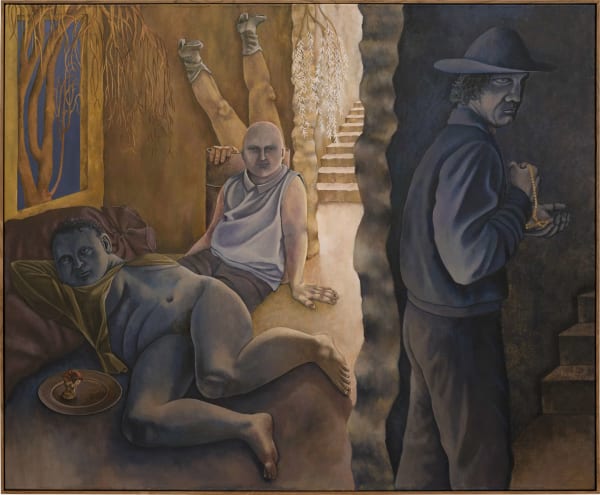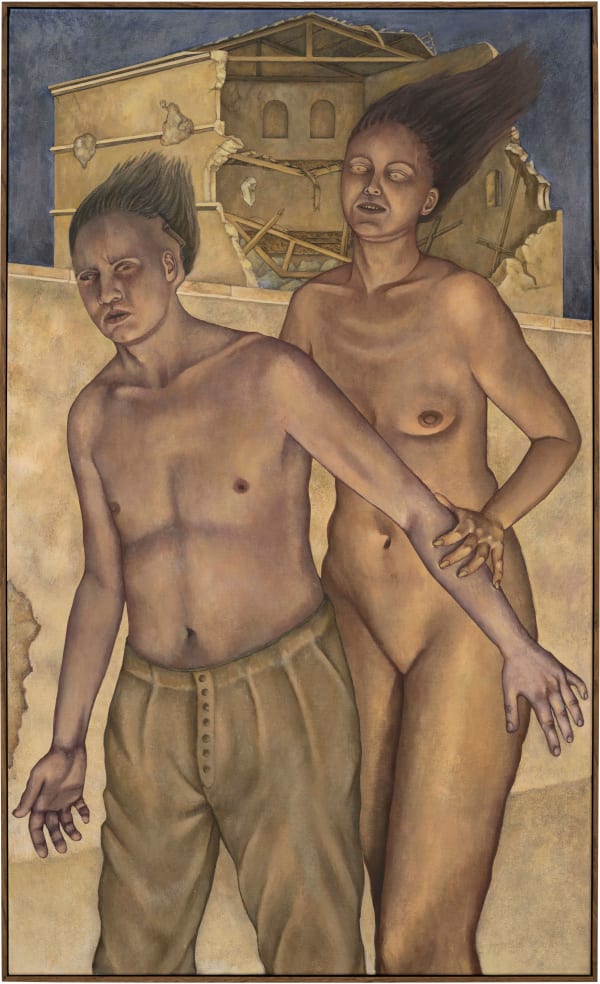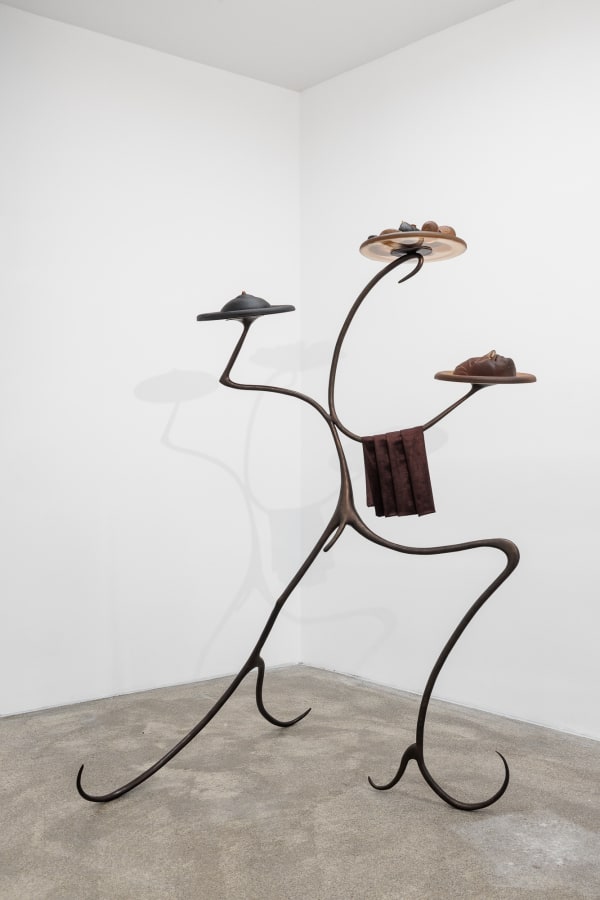Dominika Dobiášová: Wish to Live Well
Previous exhibition
Text
Dominika Dobiášová is an emerging artist from the Czech Republic whose work explores internal conflict and its interrelation to social and political phenomena. Throughout Dobiášová’s practice the artist examines archetypes of gender, including physical proportions, sexualized aesthetics, age, beauty and our perception of gender dynamics, oftentimes subverting and obscuring habitual categorization and drawing attention to ambiguity and sub-conscious bias. In this regard, rather than pursuing binary definitions of masculinity and femininity with their respective perceived power structures, through distortions of difference Dobiásová invites us to consider the nuance within these preconceptions.
Particularly within this exhibition, there lies an engagement with aggression and how it is ascribed to the genders. In ‘Witness to a Brawl’ we see what we believe to be two masculine figures fighting one another in an overt demonstration of antagonism. However, their faces and bodies are partially concealed, ultimately abstracting and dehumanizing this representation of masculinity. This factor is key to the thematic comprehension of the works in so far as, while not denying the destructive hierarchical power structures of patriarchy and the dominance of masculinity within this system, Dobiásová aims instead to place an unfiltered lens on the oftentimes masked power, strength and aggression also inherent to femininity. In this sense, to reduce femininity to altruism is equally as reductive as condemning masculinity to the purely destructive.
Thus, throughout the depictions of the characters within her works, there is an oscillation between these demonstrations of power and aggression. For example, within ‘Ulterior Motive’, a male figure stands partially obscured behind a tree with two female figures in the foreground. The power balance within this placement can be read on the one hand as the male figure looking on in an intrusive and lecherous manner at the naked figures of the women through the leaves. However, his softened posture combined with his own frontal nudity, conveys a sense of vulnerability, as if he were hiding his own nakedness from the viewer and the characters before him. Furthermore, the composition of the characters in the foreground bears a tension and almost rivalry between the two, with a suggestion that the kneeling figure’s desire is to grab the hair of the other woman in order to overpower or to impede her.
Woven throughout the whole exhibition within these considerations of aggression and gender, is a continuing interest in aspects of female sexuality. In ‘Still on the Hunt’, we are met with the image of a woman pursuing a male figure who appears to be disinterested in her engagement. The work explores a form of intense, insatiable longing, entering into the obsessive and destructive. The grotesque elements of the composition ultimately confront us with our distaste and anxiety surrounding the intensity of female sexual and romantic pursuit, suggesting that despite their power, this pursuit in itself is somehow repulsive. However, in other works such as ‘Live a Dream’ and ‘Wish They Were Asleep’, Dobiášová also intends to depict how partnership and intensity in female love, when requited, creates a balance and ultimately an intrinsic pursuit of life, albeit transient.
As with her broader practice, within the exhibition the elements of power and aggression rendered throughout the characterizations of gender are also expanded into a wider consideration on social and economic structures related to labour and capitalist systems. In this regard, alongside the paintings stands ‘Weight is Being Served’ depicting the steel figure of a waiter holding kiln cast glass plates. The figure is depicted as a man, in a more overtly symbolic recognition of the patriarchal power within society. However, again there is nuance to this reading in that, although he holds a certain control over the dominion in which he works by who he serves and how he serves them, ultimately, he is subservient to others through his labour. The intent within this reading lies in the consideration of how capitalism creates restrictive and divisive spheres from within which participants feel agency despite their ultimate exploitation. Thus, the belief in one’s own power generates a passivity and inertia both to self-exploitation and to the suffering and utilization of others.
This inertia to the exploitation and violence suffered by others is further demonstrated in ‘Witness to a Brawl’ where the characters within the scene appear to actively ignore the brutality happening around them. The term ‘actively’ feels appropriate here in the sense that each of the individuals either look down, blankly stare at, or uncomfortably turn away from the fighting, demonstrating a resigned comprehension of reality combined with their paralysis to intervene.
The complexity in disentangling and assigning the categories of victim and perpetrator in these societal systems thus comes to the forefront and is furthered by the narratives within ‘Alley of Plenty and Decay’. Within this piece, Dobiášová depicts two figures lying in an alleyway their postures slumped and inactive. Yet it is not definitively apparent whether these figures are reclining in a bourgeois decadence of overindulgence or collapsed from the exhaustion of physical labour. Furthermore, an enigmatic figure lurks to the right of the canvas holding jewels that could be interpreted as a thief or a magnanimous character redistributing wealth to the poor, ultimately creating additional moral ambiguity within the composition. These layers of subversion and ambiguity form the thematic substratum of Dobiásová’s practice, inviting us to question the moral assumptions we hold and the manner through which they influence our personal experiences and decision making.
Installation Views
Works
Mailing List
* denotes required fields
We will process the personal data you have supplied to communicate with you in accordance with our Privacy Policy. You can unsubscribe or change your preferences at any time by clicking the link in our emails.









